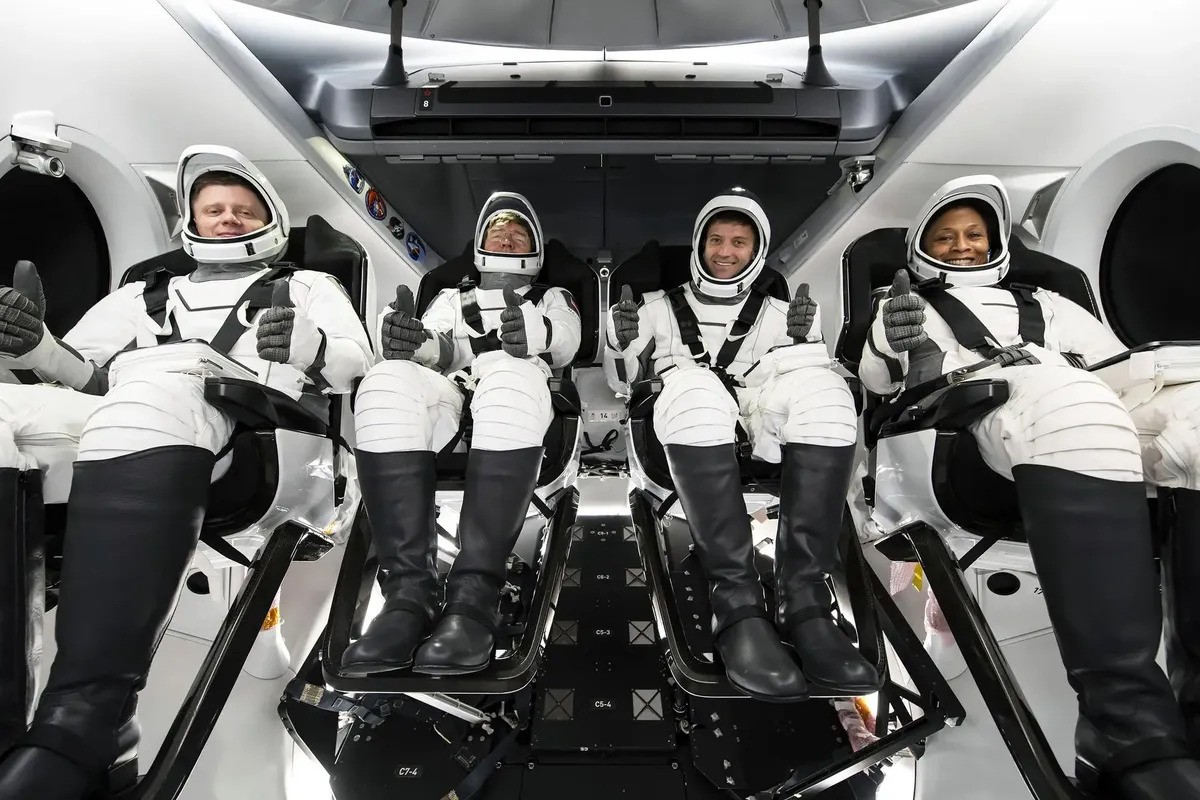SpaceX Crew-8 astronaut hospitalized in Pensacola after Dragon splashdown, in 'stable condition'
NASA said the visit was done as a precaution.


The astronauts of Crew-8 were taken to a Florida hospital as a precaution, shortly after their successful splashdown on Friday (Oct. 25), NASA said.
The SpaceX Crew-8 group of four astronauts was evaluated at Ascension Sacred Heart Pensacola, a hospital nearby their splashdown site in the Atlantic Ocean, a NASA representative told Space.com via email. A newer update from NASA issued at 1:30 p.m. EDT (1730 GMT) said one astronaut, described as "in stable condition," will remain behind in the hospital "as a precautionary measure."
The Crew Dragon spacecraft splashdown at 3:29 a.m. EDT (0729 GMT) was described as nominal by NASA officials during the standard post-flight press conference. A few hours later, however, NASA shared an e-mail statement with reporters saying the astronauts "were taken to a local medical facility for additional evaluation ... out of an abundance of caution."
Related: Crew-8 astronauts splash down on SpaceX Dragon Endeavour after weather delays (video)
The Crew-8 astronauts include NASA's Matthew Dominick, Michael Barratt and Jeanette Epps, along with Alexander Grebenkin of Russia's space agency Roscosmos.
"To protect the crew member’s medical privacy, specific details on the individual’s condition or identity will not be shared," NASA added. The agency noted the entry and splashdown were "normal" and the extra medical check was done as a precaution during "routine medical assessments on the recovery ship."

"We’re grateful to Ascension Sacred Heart for its support during this time, and we are proud of our team for its quick action to ensure the safety of our crew members," NASA added in the statement.
Breaking space news, the latest updates on rocket launches, skywatching events and more!
The crew launched on a SpaceX Falcon 9 rocket on March 3, docked with the ISS on March 5 and concluded their mission after 235 days in space, which is slightly longer than the typical 180 to 210 days. That's because Crew-8 had a two-week mission extension due to difficulties with finding good weather in the Atlantic Ocean amid hurricane season.

During a briefing roughly 90 minutes after splashdown, which was telecast online, NASA officials said the return-to-Earth events were nominal, with only minor irregularities noted with the Dragon capsule's smaller drogue chutes as well as its larger main parachutes.
"The crew is doing great,” NASA’s Richard Jones, deputy program manager of the agency's Commercial Crew Program at Johnson Space Center (JSC) in Houston, said during the briefing.
"They are going to spend a little bit of time on the recovery vessel going through their [medical] checks, and they'll soon be on their way back to Houston after all of those are done," Jones continued. "Houston" is a common nickname for JSC among space officials.
While Crew-8's mission of 235 days was slightly longer than the typical ISS mission, it was not to an unusual degree. Several ISS astronauts have been on the orbiting complex for a year at a time, for example.
The longest ISS stay was nearly 371 days in 2022-23, with the three astronauts of Soyuz MS-22/23. The all-time record for a space visit was 437 days, set in 1994-95 on the Soviet-Russian Mir space station by Russian cosmonaut Valeri Polyakov.
The ISS has hosted long-duration crews since 2000. Over the decades, NASA and its partners have developed numerous countermeasures to protect astronauts' health. Each crew member has roughly two hours of daily assigned exercise time, and astronauts have weekly mental health consultations with a physician, among many other precautions.
Returning to Earth is typically a strain for astronauts, given they have spent half a year or more in microgravity, but NASA doctors work individually with the astronauts for rehabilitation. Generally speaking, it takes several months to return to full normal activities, but astronauts can start activities like driving within a few weeks.
Editor's note: This story was updated at 1:30 p.m. EDT (1730 GMT) with the latest update from NASA.

Elizabeth Howell (she/her), Ph.D., was a staff writer in the spaceflight channel between 2022 and 2024 specializing in Canadian space news. She was contributing writer for Space.com for 10 years from 2012 to 2024. Elizabeth's reporting includes multiple exclusives with the White House, leading world coverage about a lost-and-found space tomato on the International Space Station, witnessing five human spaceflight launches on two continents, flying parabolic, working inside a spacesuit, and participating in a simulated Mars mission. Her latest book, "Why Am I Taller?" (ECW Press, 2022) is co-written with astronaut Dave Williams.
